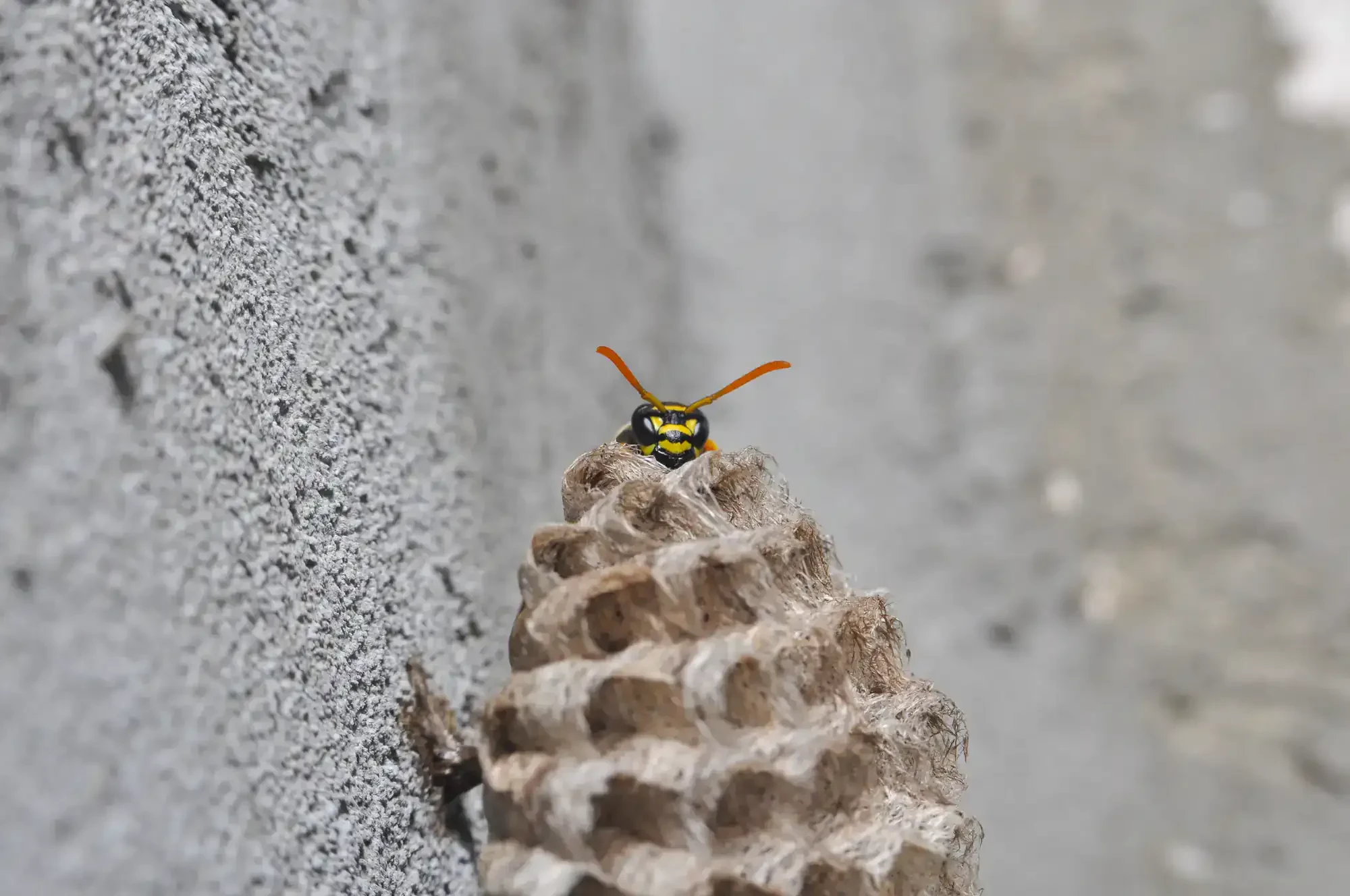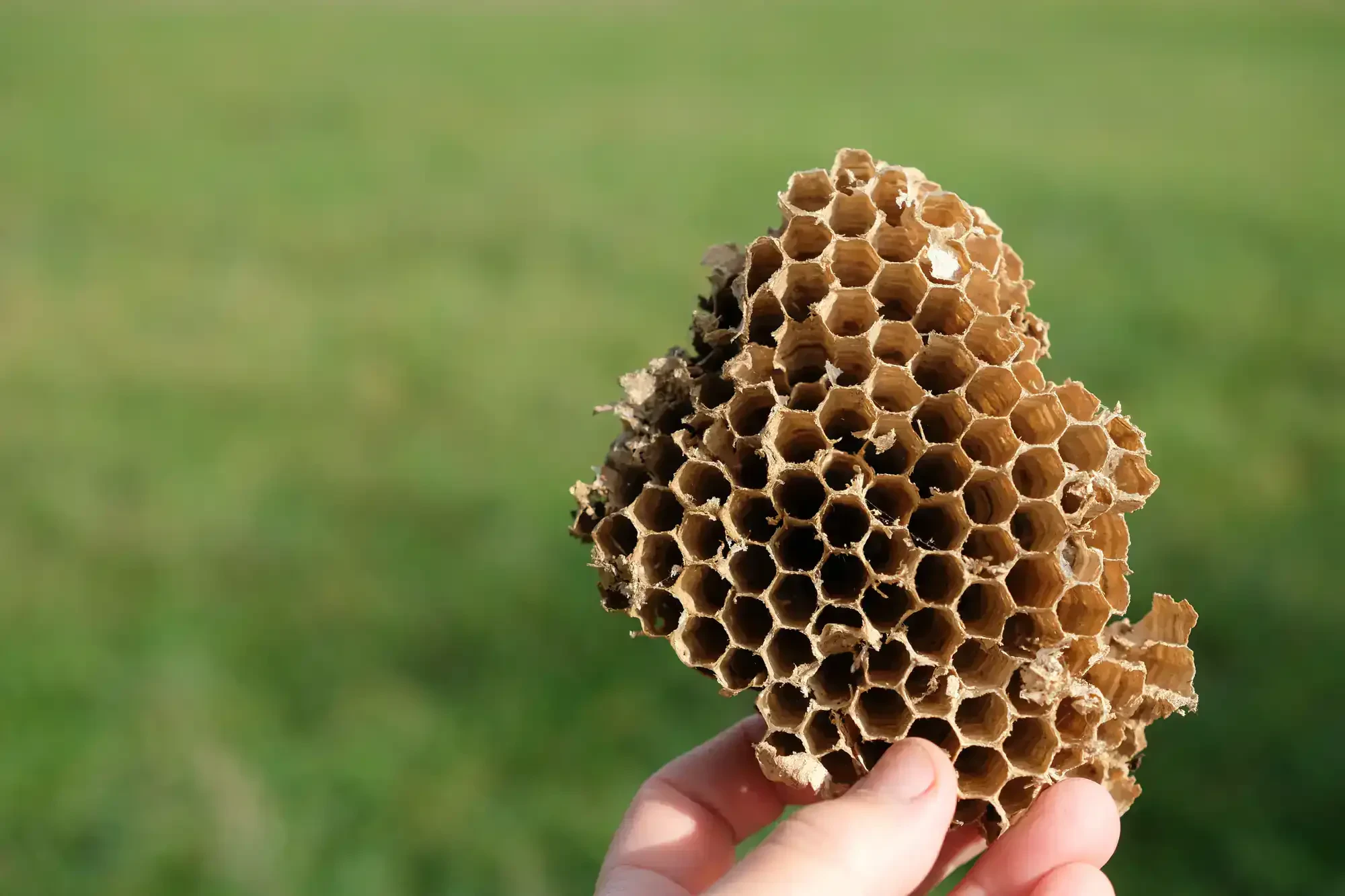
Hear from Our Customers

You’ll watch your children play outside again without scanning for hornets. Your backyard becomes the peaceful retreat you intended, not a danger zone you avoid. Evening barbecues and weekend yard work happen without the constant threat of aggressive insects swarming when disturbed.
Professional hornet removal in Village of Clarkston eliminates entire colonies, not just the hornets you can see. We locate hidden nests in wall voids, attics, and high tree branches where DIY attempts fail dangerously. You get complete elimination that prevents the terrifying experience of having hundreds of angry hornets attack because someone got too close.
The peace of mind alone justifies professional service. No more rushing inside when you hear buzzing. No more explaining to guests why they can’t use certain areas of your property. Your investment protects what matters most while restoring normal life.
First Choice Pest Control has eliminated dangerous hornet nests for Village of Clarkston families since 2005. Roger brings 26 years of hands-on experience to every emergency call, and you work with the same trusted technician who knows your property and concerns.
We’re among fewer than 100 companies nationwide offering specialized canine bed bug detection. That expertise and attention to detail extends to every service, including the complex task of safely removing aggressive hornet colonies from residential properties.
Awards from Angie’s List and Home Advisor confirm what local residents already know: we arrive when promised, eliminate problems completely, and stand behind our work. Village of Clarkston homeowners choose us because experience matters when your family’s safety is at stake.

We start with thorough property inspection to locate all nests and identify the hornet species. Village of Clarkston’s mature trees and quiet neighborhoods create ideal conditions for multiple nesting sites. European hornets prefer wall voids and attics, while bald-faced hornets build distinctive paper nests in trees and under eaves. Each species requires different removal approaches.
Our technicians eliminate the entire colony using professional-grade treatments and protective equipment designed for aggressive stinging insects. We don’t just spray visible activity and hope for the best. Complete elimination means neutralizing all hornets including larvae and pupae, then safely removing nest structures that could attract future colonies.
Finally, we seal entry points and provide specific recommendations for your property. Hornets return to favorable locations, so prevention is crucial for long-term success. We monitor treated areas and return at no charge if activity resumes during your service period.

Ready to get started?
Emergency hornet removal gets priority scheduling because we understand the immediate danger aggressive colonies pose to families. Same-day or next-day service means you don’t spend another night worrying about someone accidentally disturbing a nest. Our technicians arrive equipped with specialized protective gear and professional treatments unavailable to consumers.
Village of Clarkston’s established neighborhoods and wooded properties create unique challenges for hornet control. Properties with mature landscaping, overhanging eaves, and quiet corners provide ideal nesting sites that require experienced assessment. We understand these local conditions and adjust our approach based on your specific situation.
Your service includes complete nest location and elimination, entry point sealing, and ongoing monitoring during the treatment period. We also provide practical advice for reducing attractants like uncovered food sources and standing water that draw hornets to residential properties. Our straightforward warranty ensures peace of mind – if hornets return, we return at no additional charge.

Hornet stings are significantly more dangerous than most other stinging insects because hornets can sting repeatedly without losing their stinger, injecting venom multiple times during an attack. The venom contains proteins that cause severe pain, swelling, and burning sensations lasting hours or even days.
Michigan sees thousands of hospitalizations annually from wasp and hornet stings, with many requiring emergency treatment for allergic reactions. For people with sensitivities, a single hornet sting can trigger anaphylactic shock, causing chest tightness, facial swelling, and difficulty breathing that becomes life-threatening without immediate medical intervention.
The real danger multiplies when colonies feel threatened. Disturbed hornets release alarm pheromones that signal hundreds of other colony members to attack simultaneously. This coordinated response creates situations where people suffer multiple stings in seconds, overwhelming the body’s ability to cope with the venom load safely.
DIY hornet removal fails because homeowners typically only treat visible activity without eliminating the complete colony structure hidden inside nests. Store-bought sprays rarely penetrate deep enough into large nests to reach all hornets, larvae, and pupae. Incomplete treatment leaves surviving insects to rebuild and continue the threat.
Most hornet nests extend into areas homeowners can’t reach safely – inside wall voids, high up in trees, or tucked under eaves and overhangs. Attempting to reach these locations without proper equipment and protective gear often results in serious injuries when angry hornets swarm to defend their colony.
Professional removal succeeds because we locate all nesting sites, eliminate entire colonies including developing stages, and seal entry points to prevent reinfestation. We use specialized equipment and proven methods that ensure complete elimination the first time, preventing the dangerous cycle of repeated DIY attempts that often make situations worse.
Early detection provides the safest removal conditions when nests are smaller and contain fewer hornets. Spring and early summer colonies pose less risk during professional elimination. However, waiting isn’t an option when nests threaten high-traffic areas like entryways, play areas, or outdoor living spaces.
Hornet activity peaks during August in Michigan when colonies reach maximum size and become increasingly aggressive as natural food sources become scarce. Late summer nests can house hundreds of hornets, making professional removal absolutely essential for safety. DIY attempts during peak season frequently result in multiple stings and emergency room visits.
Professional removal remains effective regardless of timing because our technicians have the protective equipment and expertise to handle large, aggressive colonies safely. We provide emergency service for situations where nests pose immediate danger to residents or visitors. The key is contacting professionals immediately upon discovery rather than hoping hornets will leave on their own.
Village of Clarkston residents most commonly encounter bald-faced hornets and European hornets, along with yellowjackets that are often mistaken for true hornets. Bald-faced hornets build distinctive football-shaped, gray paper nests hanging from tree branches, eaves, or other elevated locations. These insects are extremely aggressive and will attack with little provocation.
European hornets are Michigan’s only true hornet species, measuring up to 1.5 inches with yellow-striped abdomens and reddish thorax sections. They’re most active at dusk and frequently build nests in tree hollows, wall voids, or attic spaces. Their large size and territorial nature make them particularly dangerous when nests are disturbed.
Proper identification is crucial because each species requires different removal approaches based on nesting habits and defensive behaviors. Treatment methods effective for one species may be completely ineffective or dangerously counterproductive for others. Our experienced technicians identify all local stinging insects accurately and apply the most effective removal strategy for each specific situation.
Prevention begins with complete nest material removal and treating areas to eliminate pheromone traces that could attract new hornets to the same location. We seal entry points around eaves, soffits, and wall penetrations to prevent access to protected nesting areas inside your home’s structure.
Property modifications play a crucial role in long-term hornet prevention. Keeping outdoor food sources covered, removing fallen fruit promptly, and maintaining clean garbage storage areas reduces foraging opportunities that draw hornets to residential properties. Trimming vegetation away from structures eliminates convenient nesting sites and reduces cover for approaching insects.
Regular monitoring during peak hornet season helps identify new activity early when removal is safer and more effective. Our service includes ongoing inspection and treatment to address emerging threats before they become established colonies. We also provide specific recommendations based on your property’s unique characteristics and the particular pest pressures common in Village of Clarkston.
Stay away from the nest area immediately and avoid any activities that might disturb or vibrate the structure. Don’t attempt removal yourself, spray it with household products, or get close enough for detailed inspection. Hornets defend their nests aggressively, and even approaching within several feet can trigger defensive attacks from multiple insects.
Keep children and pets away from the area immediately and establish a safe perimeter around the nest location. Mark the spot from a safe distance so you can direct our technicians to it, but avoid using anything that might fall toward or contact the nest. If hornets are actively flying in and out, observe the pattern from indoors to help with species identification.
Contact us immediately for emergency removal, especially if the nest threatens entryways, play areas, or anywhere people regularly spend time. We provide same-day or next-day service for dangerous situations involving aggressive stinging insects. While waiting for professional removal, avoid using the affected area entirely and warn others about the hazard location.